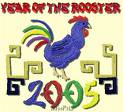She explained to me that it is an anxiety issue built around his loss of the structure that he had during his school day. He probably felt out of control and anxious about it. It seems that many children with such issues benefit from "visual cues" or "visual support" Shannon explained that when children have these cues available, then they are able to organize their thinking about the upcoming day and have much less stress about it. When they have questions, they can be redirected to the visual cue cards and over time the stress will diminish. Many children need this throughout the course of their education and obviously at home for the same reasons. After we spoke about it, I researched it a bit more and found this helpful piece to explain visual support and how it is implemented at the preschool level. There is even a way to visually cue a child to the fact that sometimes a strict schedule cannot be adhered to and that when events change unexpectedly that it will be just fine.
If you think about it, it really is like us adults having lists of the things that we need to get accomplished every day. If we did not have the lists then we may forget what we need to get done and seeing it there in black and white reduces are anxiety about what we need to get accomplished each day.
I hope that this info helps some of you that may be experiencing similar issues. Huge thanks to Shannon for cuing me on the cues ;-) I will be beginning the use of the cue strips immediately and will let you know how he does with it.
One more thing before I share the info, I have had lots of emails asking about Marc and his condition. I will give you a full update on my next post but he is fine. He will be having an in hospital test next week and then the heart surgery after that. I promise I will post more by the weekend. Hugs to all of you.
Visual Support Tips in the Preschool Class
By observing children in many different preschools, I've noticed that the classes which utilize an abundance of visual supports for children have far more independent and secure students. Many children as well as adults perform much better with additional visual cues throughout the day. I know I need my various lists or palm pilot to remind me what I need to accomplish each day or each week. It helps me keep focused on the priorities of my life. There are so many distractions each day to tempt us away from what needs to be accomplished.
This is true of preschoolers as well as they negotiate through the preschool day. Just think of being four years old in a new class with loads of play areas and visual distractions. Not only do you have this sea of fun, you have lots of friends and adults within one room to play with. What a thrill! But then your teacher says, "It's time for circle", and you have to drop what you're doing, pick up and go and sit quietly on the carpet for twenty plus minutes while all the toys and activities are calling out to you to play with them. How do you survive the day??
By utilizing visual supports for the whole class, you assist students in planning and preparing themselves for a period of time. They begin to understand that even though it may be difficult to come to circle, that after circle they'll be able to visit centers, then have snack, then go out to play, etc. They'll learn to organize themselves and have less anxiety about their day. For those who may miss home, they'll be able to see that there's an end in sight after they complete several more activities. It also reduces the amount of repeating directions to children.
Visual support strips are especially helpful to preschool classes which include children with special needs. I suggest to parents to use these techniques at home to assist with bedtime and mealtime routines. Here's a few examples:
• Use a classroom visual strip for the morning's activities on a wall where students and teachers can easily refer to it. Each picture should be large enough to be seen from anyplace in the class. One class uses the following sequence for their preschool class: free play, circle, activity centers, snack, read book, recess, home. Teachers refer to the strip as each transition is about to occur.
• Individual student strip- Some children with high anxiety or limited language skills may benefit from an individual strip. They can have pictures posted on Velcro to remind them of the activities of the session. After each task/center is completed, they learn to remove the picture and place it in the all done envelope below their strip. A teacher assistant usually guides the child with this plan until the child can independently follow the strip with the cue "Sam, check your chart."
• Individual task strips are utilized in certain activities such as fine motor center. For some students to envision completing a fine motor project is overwhelming and may elicit a meltdown. By following the task strip of paint pumpkin, cut out eyes, nose and mouth, and paste parts on pumpkin; the child can complete the project with a minimal amount of assistance.
• Visual strips can also be placed in areas where a routine needs to be followed such as sequence to wash hands or use bathroom.
• A zigger zagger icon (thunderbolt) is introduced to the children as some unexpected event that may change the expected routine of the day or activity. Maybe outdoor recess needs to be canceled due to an unexpected thunderstorm. Children need to learn that changes may occur that were not planned for and it's OK.
Additional Visual Strategies
1. A list of classroom rules which may use pictures may assist the students.
2. Labels with words or pictures on center areas or bins of toys.
3. Classroom helper chart with a picture of each child and their assigned task for the week.
4. A choice board with a variety of activities (pictures) for students to choose when unable to verbally request one.
5. A song choice board where students can choose a song to sing from a group of songs which have been introduced over the course of several months.
6. Preschool staff may wear a flexible wristband with a variety of picture icons to reinforce what a child needs to do. Some children with delays may respond more appropriately to the picture than the verbal instruction. Teacher verbally states the direction once in combination with the picture and then presents the picture again to reinforce the instruction.
By incorporating visual supports in the preschool classroom, children learn to independently refer to pictures throughout the day to stay organized, reduce anxiety and prepare for the upcoming activities.
I feel very lucky to have so many wonderful sources of info and support in my network of friends. I hope that this info helps some of you that may be experiencing similar issues.
**********************
Sheila Demers, author, special education administrator, teacher and childcare trainer, is an expert in children with special needs and challenging behavior. With over twenty-five years experienced as an educator including special education teacher, preschool coordinator, guidance counselor and private placement specialist; she has provided training for children, families, and educators in their search to implement strategies and supports regarding specialized needs of children.
Sheila holds New Hampshire certifications as an Elementary Educator, Special Educator, Guidance Counselor and Special Education Admistrator. She also holds a New Hampshire credential as a childcare Mentor, Trainer and Faculty. As a Preschool Coordinator for the past twelve years, she has developed, implemented and supervised integrated preschool programs for children with and without disabilities. She is a sought after provider of consultation services to preschools and childcare centers. Through these services many children with special needs and behavior challenges have enjoyed successful preschool experiences. Personally committed to maximizing the potential of each child's abilities, she is actively involved in local and statewide committees to improve services to young children and their families.
For more information contact Sheila(at)preschoolbuildingblocks.com www.preschoolbuildingblocks.com











6 comments:
Lori,
I started using visual schedules with Julia last year. When we can't use our strips, we draw our schedules. It is an amazing tool. Using schedules also makes changing schedules easier after awhile.
i can send you some picture of what we use if you want/need it.
Welcome to my world! (No, really, it is not so bad at all.)
Suzanne
Gee. I never actually realized what I was doing. I have lived by lists & schedules for so long. The reality is that we too have been trained by these visual aids. Shannon is great!
Rachel's school uses many visual charts throughout the room. They have the chore chart, they sign in by moving their name with a color and shape assigned to them from a House to a School picture each morning and then back again when they leave. We've got routines and that helps too, but there are times when the routine changes and Rachel seems to be okay with it.
I'm a major list maker. I've actually put an item on my list that I've just done, just so I can mark it done. Strange, I know, but it's an accomplishment.
I hope this helps Ethan.
Very interesting. Our attachment therapist had a different take on the "need to know". She said it was a form of anxiety and control and advised us to tell Cami that we were the adults and we would always take care of her, she would always be with mom, dad, sister, etc. And we would always tell her what she needed to know. But as a 3yo she did not need to worry/wonder about all these things. That's what parents were for. Kindof a different perspective, but thought I would share. However, I completely understand the need to know in school what is coming up next. And I understand the need to know at home too. I'm just saying it can be a control issue in some cases. Love you. sherri
Hi Lori
I am a Kindergarten TA this year and we have 1 CRIER!! She wants to know all day long what is next and when it is time to go home and she gets herself so upset she gets sick. I read this post and I so needed to as it is so hard to stay HAPPY and postive and I got to school this AM and made her a little flip calendar that I drew pictures on for each activity we do and labeled the whole day and ended with HOME!!! You did GREAT ______!!! It did seem to help a little so THANK YOU!!!
WOW! This shed so much light into my own life. My parents are both not big planners and I have always had the need to know "the plan" vacations with me are awful...if we are thinking about going to see the sunrise I need to know what time we are getting up and what time we will be back. I enjoy the days when I can plan pretty much every minute of the day. I know that my mom especially used to have a calendar where everything was marked so I knew exactly when events were going to take place.
Post a Comment